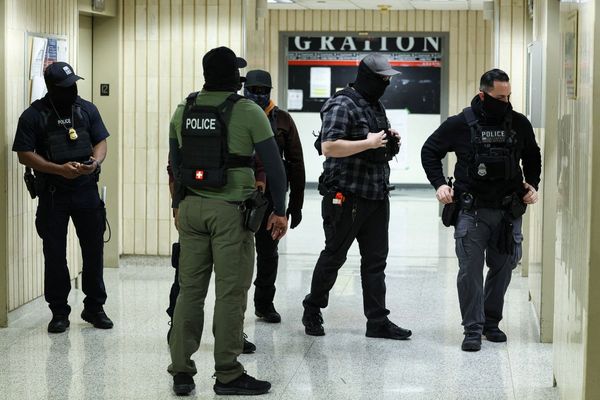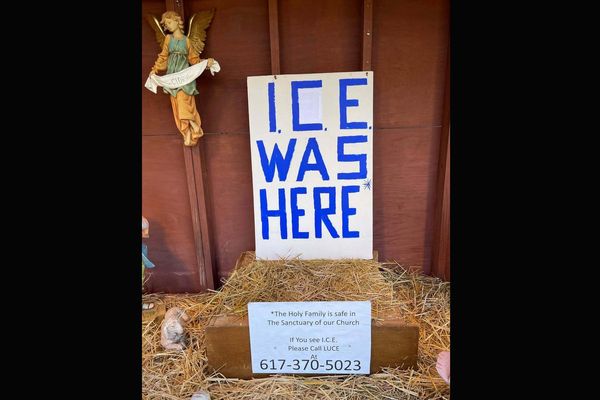
The British Open Brass Band Championship, one of more than 50 arts organisations which boasted the Queen as patron, had added reason to mourn her death as musicians from Brighouse & Rastrick raised the challenge shield at Birmingham last weekend. Like many bigger creative institutions, galleries and museums, the brass band contest will now hope to secure a new royal patron.
Stylish images of Diana at the English National Ballet, or of Catherine, the new Princess of Wales, at the National Portrait Gallery, where she became patron in 2012, make the value of a regal connection very clear. Who you get is a competitive issue. The next few weeks will see a quiet scramble to acquire a member of the immediate royal family, rather than a less familiar face.
“Institutions are very keen to secure the right patron,” said Tim Marlow, chief executive of the Design Museum and former artistic director at the Royal Academy of Arts. “It matters hugely and creates many more funding opportunities, both nationally and abroad.”

Despite the Queen handing down several patronages when she reached her 90th birthday, many still need re-allocating. Among other musical groups waiting to hear are the Royal Philharmonic Society, Help Musicians UK, the Royal Schools of Music, Royal College of Organists, Royal Northern College of Music and the London Symphony Orchestra (LSO).
Last Sunday, the LSO’s conductor, Sir Simon Rattle, led a rendition of God Save the King while his Barbican audience stood in silence. With a programme of British music, Rattle offered the season’s opening concert in tribute.
Her late Majesty’s patronage of the orchestra began with her accession to the throne, and a spokesman said that having the sovereign “as a highly esteemed badge of honour and a great privilege” had been “immensely helpful in our relationships with our overseas promoters and audiences”.
“After the period of mourning,” he added, “all of HMQ’s charities, and indeed all of the King’s charities when he was Prince of Wales, will be working with the Palace to determine how the royal patronage is taken forward.”
The Royal Philharmonic Orchestra, where Charles recently became patron, probably plans to hang on to him. His mother was also patron of the Royal Opera House and the Royal Ballet, dating back to the granting of a royal charter in 1956, and it will be hard for the King to fill all these roles.
Although a 2020 study found no proof that charities benefit financially from a royal patron, kudos is hard to evaluate. “It is a competitive moment,” said one former museum head. “Whatever institutions say, they will be doing their best, unless a royal name goes against their ethos in some way. I shouldn’t think Tate, for example, is so bothered.”

Four years ago, Tate, in fact, announced Princess Eugenie as patron of its youth organisation. Hitching your wagon to a rising royal star is not a bad move. Prince William, now Prince of Wales, has been president of Bafta since 2010, and although Sophie, Countess of Wessex, is not the most recognised royal, she was close to the Queen and stands to inherit several roles. She is also possibly in line to become Duchess of Edinburgh, if her husband Edward is handed his late father’s title, bestowed upon Charles on Prince Philip’s death.
The National Theatre already has the Duchess of Cornwall, now Queen Consort, as patron, after a brief period in which Meghan, Duchess of Sussex, took the role.
But Rada, the drama school, is now without a dedicated royal. “We were honoured to have had the Queen as our patron,” it said, “and are waiting to hear from the Palace in due course.”
The late Queen had become patron of the Royal Shakespeare Company at its creation in 1961, and last visited Stratford-upon-Avon in 2011 to reopen the refurbished building. This weekend, a spokesperson at the theatre, which screens the funeral on Monday, said: “The King is our president but there are no assumptions about the future.”
In visual arts, the late Queen’s closest link was with the Royal Academy, the site of her first official engagement after coronation. She also opened the Burlington Gardens building 65 years later. Former secretary Charles Saumarez Smith told the Art Newspaper that being a royal institution “gave a sense of long-term stability independent of government control”. It can also, however, give the erroneous impression that an organisation is fully state funded.
Her late Majesty also served as patron of the Art Fund from 1953, when galleries reorganised after the second world war, and filled the same role at smaller art charities, including the Royal Watercolour Society.
A keen amateur painter, it was Charles who became the first royal patron of the National Gallery in 2016, causing many to recall his infamous 1984 criticism that its extension was “a monstrous carbuncle”. In fact, the future king already had a long association, serving as a trustee between 1986 and 1993. His wider views on architecture have made him few friends in the profession.
The King is also currently patron of the Actors’ Benevolent Fund, the British Film Institute (BFI) and Scottish Ballet, reflecting his arts interests. The BFI secured Charles as patron when its royal charter was established in 1983, and the institute believes nothing will change immediately.







